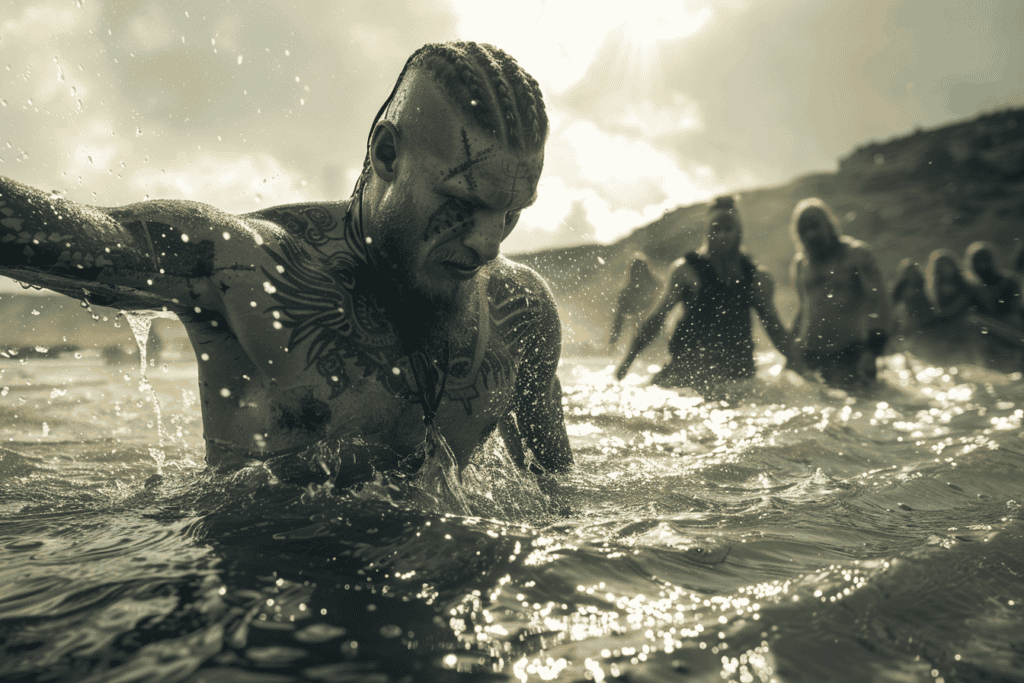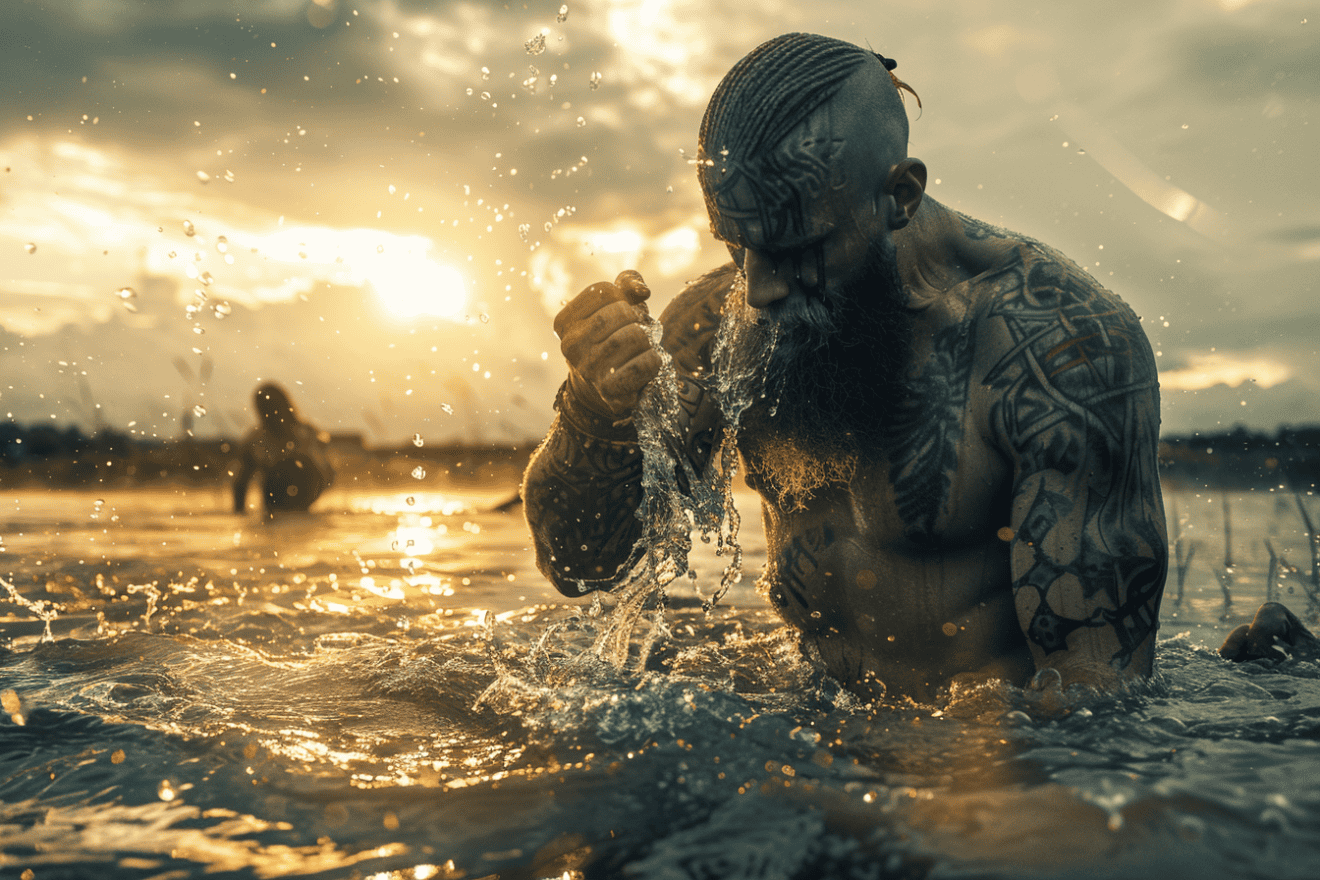When thinking about Vikings, images of fierce warriors and longships often come to mind. Yet, contrary to popular belief, the Vikings placed a significant emphasis on personal hygiene and cleanliness.
The Vikings were known to bathe at least once a week, which was frequent compared to other Europeans at the time. Saturday was known as “Laugardagr,” or “bathing day.” They employed various methods such as using hot springs, naturally flowing water, and even sweating techniques to stay clean.

Grooming tools such as combs, razors, and tweezers were common and found in archaeological sites across Scandinavia. These tools illustrate that the Norse people were meticulous about their appearance. They combed their hair daily and maintained clean, trimmed beards and hair.
Their cleanliness was not just about physical appearance; it played a crucial part in their overall well-being. By prioritizing hygiene, the Vikings ensured the health of both their bodies and minds, making their culture one of the cleanest in medieval times.
The Importance of Grooming in Viking Culture

Grooming in Viking culture was more than just a matter of hygiene; it was deeply intertwined with their social status and spiritual beliefs. Vikings took pride in their appearance, utilizing intricate grooming techniques and tools that held both practical and symbolic value.
Sacred Grooming Rituals and Gods
Grooming had spiritual significance for the Vikings. Rituals were often performed to honor gods such as Thor and Odin.
Vikings believed that caring for their hair, beards, and bodies would earn them favor with the deities.
Many combs and grooming tools were crafted from antler and bone, materials that held symbolic meaning. These grooming activities were sometimes carried out in a communal setting, reinforcing social bonds.
Haircare and facial hair treatments included the use of herbs and oils.
Social Status and Appearance
A well-groomed appearance was a marker of one’s social status in Viking society.
Combs, made from materials like antler and bone, were highly valued and often intricately decorated. Long, well-maintained beards and elaborate hairstyles indicated a person’s rank and wealth.
The emphasis on grooming extended beyond men to women, who also took great care in their appearance.
Clean clothes, often made of linen and wool, were further adorned with jewelry. Proper grooming and appearance symbolized strength and power, reflecting an individual’s position within the community.
In this way, grooming practices offered a clear visual representation of social hierarchy among the Vikings.
Viking Bathing and Cleansing Practices

Vikings took their personal hygiene seriously, contrary to popular belief. They utilized natural water sources such as rivers, lakes, and hot springs, and a variety of tools and techniques to maintain cleanliness.
Rivers and lakes were convenient locations for bathing and washing clothes. Hot springs were particularly prized because they provided warm water, making the bathing experience more comfortable.
Found in places like Iceland, these geothermal pools offered a natural, soothing bath option. Vikings would often travel considerable distances to access these hot springs, reflecting their commitment to cleanliness and relaxation.
Lakes and rivers were more accessible for daily use. Communities often formed around these water sources to take advantage of the fresh, flowing water.
Bathing in these natural bodies of water allowed for regular and effective cleansing, ensuring the Vikings remained clean and healthy.
Tools and Techniques for Bathing
Vikings employed various tools to aid their bathing routines.
Combs, made from bone or wood, were used to untangle hair and remove lice. These combs were essential for daily grooming. The artifacts found in Scandinavian excavations confirm their widespread use.
Soap was typically made from animal fat and lye. This rudimentary but effective soap helped remove grime and dirt from the skin.
Vikings also brushed their teeth, using water soaked in herbals or honey, which acted as early forms of toothpaste, promoting oral hygiene.
Sweat lodges were another method to cleanse the body. These structures were similar to modern saunas, where steam and heat helped detoxify the skin. Sweating combined with subsequent bathing ensured thorough purification.
Clothing was regularly washed as well.Clean fabrics were vital for personal hygiene, especially during long voyages.
The use of natural soaps and frequent laundering showed that hygiene extended beyond just the body, highlighting a broader commitment to cleanliness.
Personal Hygiene Tools and Accessories

Vikings valued personal hygiene and crafted various tools for grooming. These items reveal their care for cleanliness and attention to detail in maintaining their appearance.
Hair and Beard Maintenance
Vikings used a range of tools for hair and beard care.
Intricately decorated combs made from bone, antler, or metal were essential for keeping their hair neat and untangled. These combs were prized and often carried as accessories.
Tweezers were used to remove unwanted hair, demonstrating their dedication to grooming.
Razors and scissors were utilized for trimming beards and hair, ensuring a well-kept look.
Vikings even bleached their hair and used soap made from animal fat and wood ash.
For dental hygiene, they used picks to clean teeth and maintain healthy gums.
Ear spoons were also a part of their grooming kit, showing their thorough approach to personal cleanliness.










Add Comment